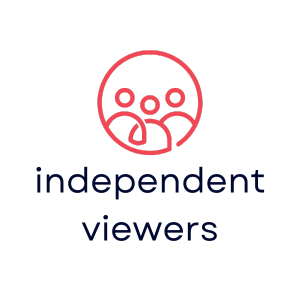Social media PR has revolutionized how brands connect with their audiences in today’s digital landscape. As traditional public relations evolves, businesses must adapt their strategies to leverage the immense power of social platforms for building relationships, managing reputations, and driving engagement.
The intersection of social media and public relations creates unprecedented opportunities for real-time communication and brand storytelling. With over 4.9 billion social media users worldwide, organizations can now reach massive audiences instantly while fostering authentic connections through strategic content and meaningful interactions. From crisis management to influencer partnerships, social media PR has become an essential tool for modern businesses looking to maintain a competitive edge and establish lasting brand authority.
What Is Social Media PR and Why It Matters
Social media PR integrates traditional public relations strategies with digital platforms to build brand reputation through direct audience engagement. This integration creates a dynamic communication channel where organizations connect with stakeholders in real-time across multiple social networks.
The Convergence of Public Relations and Social Platforms
Social media PR combines strategic messaging with platform-specific content formats to maximize audience reach. Organizations leverage social networks’ native features like Instagram Stories, Twitter Threads or LinkedIn Articles to distribute press releases, company updates or crisis communications. The integration enables PR professionals to:
- Monitor brand mentions across platforms using social listening tools
- Engage with media contacts through direct messaging features
- Share multimedia content including live videos, infographics or blog posts
- Track engagement metrics to measure campaign effectiveness
- Respond to customer feedback in real-time discussion threads
Key Benefits for Modern Businesses
Social media PR delivers measurable advantages for organizations implementing integrated communication strategies:
| Benefit | Impact Metric |
|---|---|
| Increased Reach | 3.6B active social media users globally |
| Faster Response Time | Average response within 1-2 hours |
| Cost Efficiency | 67% lower cost per lead vs traditional PR |
| Enhanced Analytics | Real-time tracking of engagement rates |
- Direct access to target audiences without media intermediaries
- Instant distribution of time-sensitive announcements
- Enhanced crisis management through immediate updates
- Authentic relationship building with industry influencers
- Data-driven insights for campaign optimization
- Cross-platform content amplification opportunities
Essential Social Media PR Strategies

Social media PR strategies focus on creating meaningful connections through strategic communication across digital platforms. These strategies combine traditional PR principles with modern social media dynamics to maximize brand impact.
Building an Authentic Brand Voice
Brand voice development starts with establishing consistent tone, language patterns and communication style across all social media channels. Organizations create detailed brand voice guidelines that outline specific vocabulary, emoji usage and response templates for different scenarios. Companies like Nike maintain authenticity by aligning their motivational tone with customer aspirations while Wendy’s leverages witty humor to engage their audience.
Creating Shareable Content
Shareable content incorporates three key elements: visual appeal, emotional resonance and practical value. Organizations optimize content through:
- Using high-quality images with branded elements
- Creating bite-sized video clips under 60 seconds
- Incorporating trending hashtags strategically
- Designing infographics that simplify complex information
- Timing posts during peak engagement hours
| Content Type | Average Engagement Rate |
|---|---|
| Video Posts | 6.09% |
| Image Posts | 4.36% |
| Link Posts | 2.74% |
| Text Posts | 1.97% |
Managing Online Reputation
Online reputation management integrates proactive monitoring with swift response protocols. Key practices include:
- Setting up social listening tools to track brand mentions
- Responding to customer feedback within 30 minutes
- Documenting crisis communication procedures
- Maintaining transparency during challenging situations
- Building relationships with industry influencers
- Tracking sentiment analysis through social media analytics tools
Social media monitoring platforms identify potential issues before they escalate into crises. Regular sentiment analysis reports help brands adjust their communication strategies based on audience perception and engagement metrics.
Top Social Media Platforms for PR Success
Each social media platform offers unique opportunities for PR professionals to connect with specific audiences and achieve distinct communication objectives. Here’s how leading platforms serve different PR goals:
LinkedIn for Professional Outreach
LinkedIn’s professional network reaches 930 million users across 200 countries, making it ideal for B2B communication. PR professionals leverage LinkedIn through:
- Publishing long-form thought leadership content via LinkedIn Articles
- Sharing company updates through branded Company Pages
- Connecting with journalists through LinkedIn’s media database
- Distributing press releases to industry professionals
- Engaging in professional group discussions related to target industries
Instagram for Visual Storytelling
Instagram’s 2 billion active users engage with visual content, creating opportunities for brand storytelling. Key PR tactics include:
- Using Instagram Stories to provide behind-the-scenes glimpses
- Creating Instagram Reels for product launches
- Hosting Instagram Live sessions for real-time announcements
- Sharing infographics through carousel posts
- Collaborating with visual content creators for brand campaigns
- Live-tweeting events using branded hashtags
- Responding to breaking news with company statements
- Creating Twitter Spaces for media briefings
- Engaging with journalists through direct messages
- Monitoring trending topics for newsjacking opportunities
| Platform | Active Users | Key PR Features |
|---|---|---|
| 930M | Company Pages, Articles | |
| 2B | Stories, Reels, Live | |
| 450M | Spaces, Threads, Live-tweeting |
Measuring Social Media PR Impact
Social media PR measurement quantifies the effectiveness of digital communication strategies through specific metrics and analytical tools. These measurements track engagement, reach, sentiment and conversion rates across social platforms.
Key Performance Indicators
Social media PR success relies on tracking essential KPIs that demonstrate campaign effectiveness:
Engagement Metrics
- Post interactions (likes, comments, shares)
- Click-through rates on PR content
- Average response time to mentions
Reach and Visibility
- Follower growth rate
- Post impressions
- Share of voice compared to competitors
- PR content distribution across platforms
Sentiment Analysis
- Brand mention sentiment scores
- Comment tone evaluation
- Customer feedback ratings
Conversion Metrics
- Website traffic from social referrals
- Landing page conversions
- Press release click-through rates
- Media pickup rates
Analytics Tools and Reporting
Professional analytics platforms provide comprehensive data for measuring social media PR performance:
Monitoring Tools
- Hootsuite: Tracks cross-platform metrics
- Sprout Social: Measures engagement analytics
- Mention: Monitors brand conversations
- Brandwatch: Analyzes consumer sentiment
Reporting Features
- Real-time dashboard monitoring
- Automated weekly/monthly reports
- Custom metric tracking
- Competitive benchmarking
- Google Analytics connection
- CRM system integration
- Social platform API access
| Metric Type | Primary KPIs | Measurement Frequency |
|---|---|---|
| Engagement | Interactions, CTR | Daily |
| Reach | Impressions, Growth | Weekly |
| Sentiment | Mention Score | Monthly |
| Conversion | Traffic, Leads | Monthly |
Crisis Management in the Social Media Age
Social media crises emerge and escalate within minutes, requiring organizations to maintain robust response systems. Digital platforms amplify both positive and negative messaging, making effective crisis management essential for protecting brand reputation.
Rapid Response Protocol
Social media crisis management starts with a 24/7 monitoring system using tools like Mention or Brandwatch. The protocol includes:
- Create pre-approved response templates for common crisis scenarios
- Establish a designated crisis communication team with clear roles
- Monitor hashtags, mentions & direct messages across platforms
- Set up automated alerts for unusual spikes in brand mentions
- Document each crisis interaction in a centralized dashboard
Response time benchmarks:
| Crisis Level | Initial Response Time | Follow-up Window |
|---|---|---|
| High Priority | 15-30 minutes | Every 1-2 hours |
| Medium Priority | 1-2 hours | Every 4-6 hours |
| Low Priority | 4-6 hours | Within 24 hours |
Rebuilding Brand Trust
Brand trust restoration focuses on transparent communication through strategic social media engagement. Key actions include:
- Share regular progress updates on resolution efforts
- Post behind-the-scenes content showing corrective measures
- Implement customer feedback through visible platform changes
- Create dedicated crisis resolution microsites or landing pages
- Engage with affected stakeholders through direct messaging
- Partner with third-party validators to verify improvements
| Metric | Measurement Method |
|---|---|
| Sentiment Score | Social listening tools |
| Engagement Rate | Platform analytics |
| Brand Mention Quality | Content analysis |
| Customer Response Time | Response tracking |
Building Meaningful Media Relationships
Media relationships form the cornerstone of successful social media PR campaigns, connecting brands with influential voices across digital platforms. These partnerships amplify brand messages and enhance credibility through strategic collaborations.
Influencer Partnerships
Influencer partnerships create authentic brand advocacy through strategic collaborations with content creators. Marketing teams identify relevant influencers using platforms like Upfluence or AspireIQ based on audience demographics, engagement rates and brand alignment. Successful partnerships include:
- Creating co-branded content that integrates naturally with the influencer’s existing style
- Establishing long-term ambassadorship programs rather than one-off promotions
- Implementing clear deliverables with measurable KPIs for each campaign
- Developing authentic storytelling angles that resonate with target audiences
| Partnership Metric | Industry Benchmark |
|---|---|
| Engagement Rate | 4.5% – 8% |
| Brand Lift | 15% – 25% |
| Conversion Rate | 2.5% – 5% |
Press Engagement Tactics
Digital press engagement transforms traditional media relations through social-first communication approaches. PR professionals connect with journalists through:
- Crafting multimedia press releases optimized for social sharing
- Building Twitter lists of relevant media contacts for real-time engagement
- Hosting virtual press events through LinkedIn Live or Instagram Live
- Creating newsroom social media content hubs for easy press access
| Platform | Response Time |
|---|---|
| 1-2 hours | |
| 4-6 hours | |
| 12-24 hours |
Media outreach effectiveness increases by 65% when combining traditional PR tactics with social media engagement strategies. Journalists receive 45% of their story ideas through social media platforms, making consistent online presence essential for PR success.
Conclusion
Social media PR has revolutionized how organizations connect with their audiences in the digital age. Through strategic platform selection targeted messaging and authentic engagement brands can now build stronger relationships with stakeholders while effectively managing their online reputation.
Success in social media PR requires a balanced approach combining traditional PR expertise with digital innovation. Organizations that embrace this evolution while maintaining authenticity and responsiveness will continue to thrive in an increasingly connected world.
The future of PR lies in leveraging social platforms’ unique capabilities measuring impact through data-driven insights and fostering meaningful relationships with both media professionals and online communities. As digital landscapes evolve brands must stay agile and adaptive to maintain their competitive edge in social media PR.

